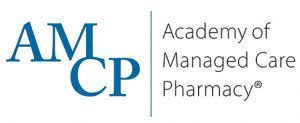
The Academy of Managed Care Pharmacy (AMCP) supports the use of therapeutic interchange programs as a part of a comprehensive approach to quality, cost‐effective patient care. Therapeutic interchange is the practice of replacing, with the prescribing physician’s approval, a prescription medication originally prescribed for a patient with a chemically different medication. Medications used in therapeutic interchange programs are expected to produce similar levels of clinical effectiveness and sound medical outcomes, based on available scientific evidence.
Therapeutic interchange programs are evidence‐based. These programs are developed and administered by a team of physicians, pharmacists, and other medical practitioners who are experts in the diagnosis and treatment of disease. The programs are designed to work in conjunction with other tools that health care professionals use to promote quality medical results.
(See – RiskManagers Partners With Prescription Care Management)
Therapeutic interchange programs are used in health care delivery systems that coordinate the prescription medications patients receive to optimize patient care. These systems often use formularies which list preferred medications as a prescribing guide for physicians in cases where alternative medication products are available to treat a particular patient’s condition.1 Therapeutic interchange programs and formularies are commonly used by hospitals, health plans, and pharmacy networks administered by health plans or pharmacy benefit management companies (PBMs).
Using therapeutic interchange offers several advantages:
Value to Patients
When therapeutic interchange occurs, physicians and other health care experts have determined that patients will experience similar or improved clinical outcomes with the replacement medications. The replacement medication may be more convenient for the patient to take. For example, a patient is more likely to take medication as prescribed if he or she is moved to a therapeutically equivalent product that only needs to be taken twice a day rather than four times a day. A medication that has a high likelihood to cause side effects may be replaced with one that is less likely to do so. A new medication that offers improved therapeutic outcomes may replace an older remedy. A patient is generally less likely to miss doses, and thereby gets the full clinical benefit of their prescription, if the medication is convenient to use, causes fewer side effects, or provides improved control or relief of their condition.
Affordability
A replacement medication that is therapeutically equivalent might simply cost less. Once two medications are determined to result in the same positive outcomes for the patient, it makes sense for the hospital, health plan, or pharmacy network to use the less expensive alternative. Additionally, this may result in lower out‐of‐pocket expenses for the patient because of reductions in copayments. In instances where two medications are therapeutically equivalent, AMCP does not support therapeutic interchange programs that result in higher costs for patients and/or plan sponsors.
Therapeutic interchange, however, is not always about lower medication costs. One goal of therapeutic interchange programs is to achieve overall health care savings. In some instances, replacing one medication with a more expensive medication may result in fewer treatment failures, better patient adherence to the treatment plan, fewer side effects and improved clinical outcomes. Such efficient use of medical resources helps keep medical costs down, improves the patient’s access to more affordable health care, and enhances the patient’s quality of life.

